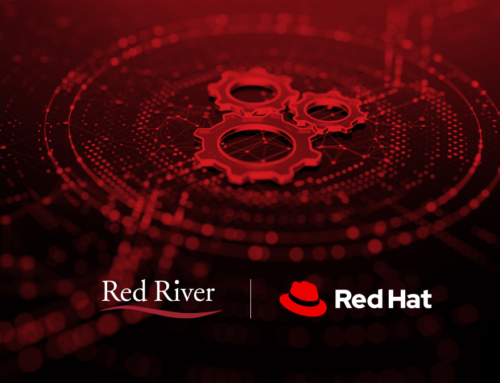
Help Desk vs. Service Desk: What’s the Difference?
Do you need a service desk or a help desk for your business? Or both? What is the difference between help desk and service desk services? Is it better to keep them internal or outsource? What about a customer service help desk vs. an internal help desk for employees?
Both service desks and help desks serve an ultimate goal: keeping your business running. But they do so in different ways. Your business likely needs both service desks and help desks to function, but you also need to understand the difference to understand the scope of each.
Let’s begin with reality: When it comes to help desk vs. service desk solutions, these terms are frequently used by end-users and administrators interchangeably. Companies may have both a help desk and a service desk, but these can be blended — especially in more complex tech stacks and SaaS-based architectures.
If you engage with an MSP and have everything managed through an MSP, you may have a comprehensive service desk. Conversely, if you have everything as-a-Service, you may have a single point-of-contact help desk through which all your service calls are routed.
Let’s dig a little more into what we mean when we discuss a help desk vs. service desk.
DEFINITIONS: HELP DESK VS. SERVICE DESK
The help desk is the single point of contact for end users to receive support. This can include answering questions, solving problems and providing guidance on company systems and help desk software. There are frequently multiple tiers of support, but they are all targeted at the end-user
Service desks are designed to be a more comprehensive solution that not only provides support to end users but also manages and coordinates the delivery of IT services to the business. This includes incident management, problem management, change management and release management.
A service desk, sometimes referred to as a customer service desk or IT service desk, is an IT support system designed to manage and resolve incidents related to computer hardware and software. It provides users with a central point of contact for all their technical issues, allowing them to address problems and get back up and running in no time quickly.
A help desk, also called a customer service help desk, on the other hand, is a customer service platform to assist users in resolving technical problems. While both help and service desks offer customer support and issue resolution services, help desk staff tend to focus more on basic troubleshooting tasks. In contrast, service desk staff are more knowledgeable and specialize in complex IT issues.
But because “help desk” and “service desk” can occasionally be used interchangeably, some confusion can arise. Often, the same technologies are used to support either, but the difference between the two is a combination of processes and workflow management.
If you have a help desk system, but your SaaS ticketing solution doesn’t allow for inter-department or cross-functional teams, for instance, then you may need to upgrade your technology. But otherwise, it may be as simple as changing your processes to accommodate service-level requests.
DIFFERENCES: HELP DESK VS. SERVICE DESK

The main difference between help desks and service desks is the scope of their respective operations. Help desks are focused on providing support to end users, while service desks take a more holistic approach to managing the delivery of IT services. Help desk support will primarily focus on closing trouble tickets, but service management may go deeper into updating and improving systems.
While help desks are usually the first point of contact for end users, service desks may be more likely to coordinate with other teams to resolve incidents and fulfill requests. Service desks may also have more robust reporting capabilities, as they are designed to track and manage the performance of IT services.
Other differences include:
- Service desks are typically more experienced in resolving complex technical issues, whereas Help Desks focus on basic troubleshooting tasks.
- Service desks often have access to a bigger variety of resources, such as self-service FAQs and knowledge bases, allowing users to resolve their own issues quickly.
- Service desks also have a broader scope, as they are often responsible for managing all IT service activities and customer service issues, not just technical support.
- Help desks, on the other hand, focus primarily on resolving technical problems and providing users with effective solutions. Customer service help desks specifically do this for your external customers.
- Finally, service desks typically require more advanced technology and resources to function properly, making them more expensive to maintain than help desks.
So, for instance, your organization could maintain a simple internal help desk and forward more complicated requests or system-wide initiatives to an MSP that manages your service desk. Alternatively, your organization could outsource both for 24/7 support.
WHICH ONE DO YOU NEED?
The answer to this question depends on the size and complexity of your IT environment, as well as the needs of your business. If you have a small IT operation with simple systems, a help desk may be all you need. However, if you have a large and complex IT infrastructure, a service desk team may be a better solution.
It’s also important to consider the future growth of your business. If you anticipate expanding your IT operations in the future, a service desk may be a more scalable solution. Implementing a help desk or service desk should be based on your specific needs and goals. There is no one-size-fits-all answer to this question. Either way, you must provide end-user and customer support that fits your business. Managed IT can help.
SERVICE DESKS, CUSTOMER SERVICE HELP DESKS AND THE PROLIFERATION OF SAAS
Advancements in cloud solutions and SaaS mean that today’s businesses have more options than ever for handling customer service and IT issues. Specifically, many SaaS solutions come with their own support, but this support is never as robust enough as either an internal department or an outsourced managed provider.
For example, a company that builds its backbone on Salesforce might consider using Salesforce support for many of its help desk ticketing issues. But while they will be experts in the Salesforce platform, they will not be experts in the organization’s operations or its processes and protocols.
Enterprise-wide, your help desk will manage trouble tickets such as lost passwords. But your service desk will manage higher-level issues, such as the deployment of new software to resolve specific company pain points.
HOW AN MSP CAN HELP BUILD YOUR HELP DESK OR SERVICE DESK

If you’re unsure whether a help desk or service desk is right for your business, an MSP can help you assess your needs and make a recommendation. MSPs can also help you implement and manage your help desk or service desk solution, providing the resources and expertise you need to ensure smooth operations.
Outsourcing your help desk or service desk is often the best solution. When you outsource your help desk/service desk, you get the following benefits:
- The ability to scale up or down as needed without the need to hire or train additional staff
- Access to expert help desk and service desk technicians
- Flexible pricing that can save you money over time
- Reduced IT overhead and improved focus on your core business
Importantly, if something isn’t working with your help desk or service desk solution, you have the flexibility and opportunity to scale it and change it as needed. By engaging with an MSP, you gain access to their state-of-the-art desk technologies, their support staff and specialists in both maintaining existing desk solutions and architecting new desk solutions.
SHOULD YOU OUTSOURCE YOUR HELP OR SERVICE DESK?
Whether to keep your service or help desk in-house or outsource depends on how much time and resources you can dedicate to the project. Many believe it’s more cost-efficient to maintain an internal department, but this isn’t always or even frequently true. For all but the smallest businesses, an internal department frequently engenders higher staffing, software and training costs.
If you don’t have the necessary resources, outsourcing may be the better choice. Outsourcing lets you tap into the resources of an MSP without having to maintain those resources yourself.
The advantages of an outsourced service desk include the following:
- A lower cost than maintaining an internal department
- Access to a large pool of knowledgeable, experienced technicians
- Quick and efficient problem resolution, often 24/7 customer care
- Better help desk software and service management
- Automation technology and best practices for improved customer service.
Most companies need both help desk and service desk support. Help desk support keeps processes running, while service desk support focuses on more extensive IT tasks.
Regardless, an outsourced desk can be a great asset for any business, big or small. By providing excellent customer service and streamlining communication between departments, a service desk can help to increase efficiency and improve the overall satisfaction of your employees and customers.
CONCLUSION: DECIDING BETWEEN A HELP DESK VS. SERVICE DESK

There is no easy answer when deciding between a help desk or a service desk. Ultimately, the decision comes down to the specific needs of your business. Some companies are fairly small but have very complicated and technical tech stacks that need to be well-integrated; technology is at the core of their business.
Other organizations are very large enterprises but don’t rely enough on their tech stack; they can get away with a more simplistic help desk architecture and don’t need service-related architecture. Only you know your business, but an MSP can help you by providing a full audit and assessing your organization’s needs.
Most enterprises need a service desk. Most small businesses need a help desk and can manage a help desk that has multiple tiers. For instance, the lowest tier of support can provide password management, while the highest tier of support may respond to potential malware or security audits.
But, most importantly, engaging with an MSP and outsourcing your help and service desks gives you room to grow. An MSP can provide you with a help desk today and expand to a service desk tomorrow. To do this internally, you would need to invest in additional software and personnel.
So, still not sure whether you need a help desk vs. service desk? We can help. At Red River, we’re experts in what an organization needs to grow and thrive.
Contact Red River today to start your journey to better support.
FAQS
WHAT IS THE DIFFERENCE BETWEEN A HELP DESK AND A SERVICE DESK?
The help desk is the single point of contact for end users to receive support. This can include answering questions, solving problems and providing guidance on using company systems and software. Service desks are designed to be a more comprehensive solution that not only provides support to end users but also manages and coordinates the delivery of IT services to the business.
IS A SERVICE DESK HIGHER THAN A HELP DESK?
The terms “help desk” and “service desk” are not hierarchical. They are simply different ways of describing the same thing. This is a misunderstanding based on escalation, with the idea that a help desk might escalate to a service desk.
WHAT IS THE DIFFERENCE BETWEEN A HELP DESK AND CUSTOMER SERVICE?
The difference between a helpdesk and customer service is that the helpdesk is focused on providing support for technical issues, while customer service is focused on providing support for non-technical issues.

written by
Corrin Jones
Corrin Jones is the Director of Digital Demand Generation. With over ten years of experience, she specializes in creating content and executing campaigns to drive growth and revenue. Connect with Corrin on LinkedIn.




